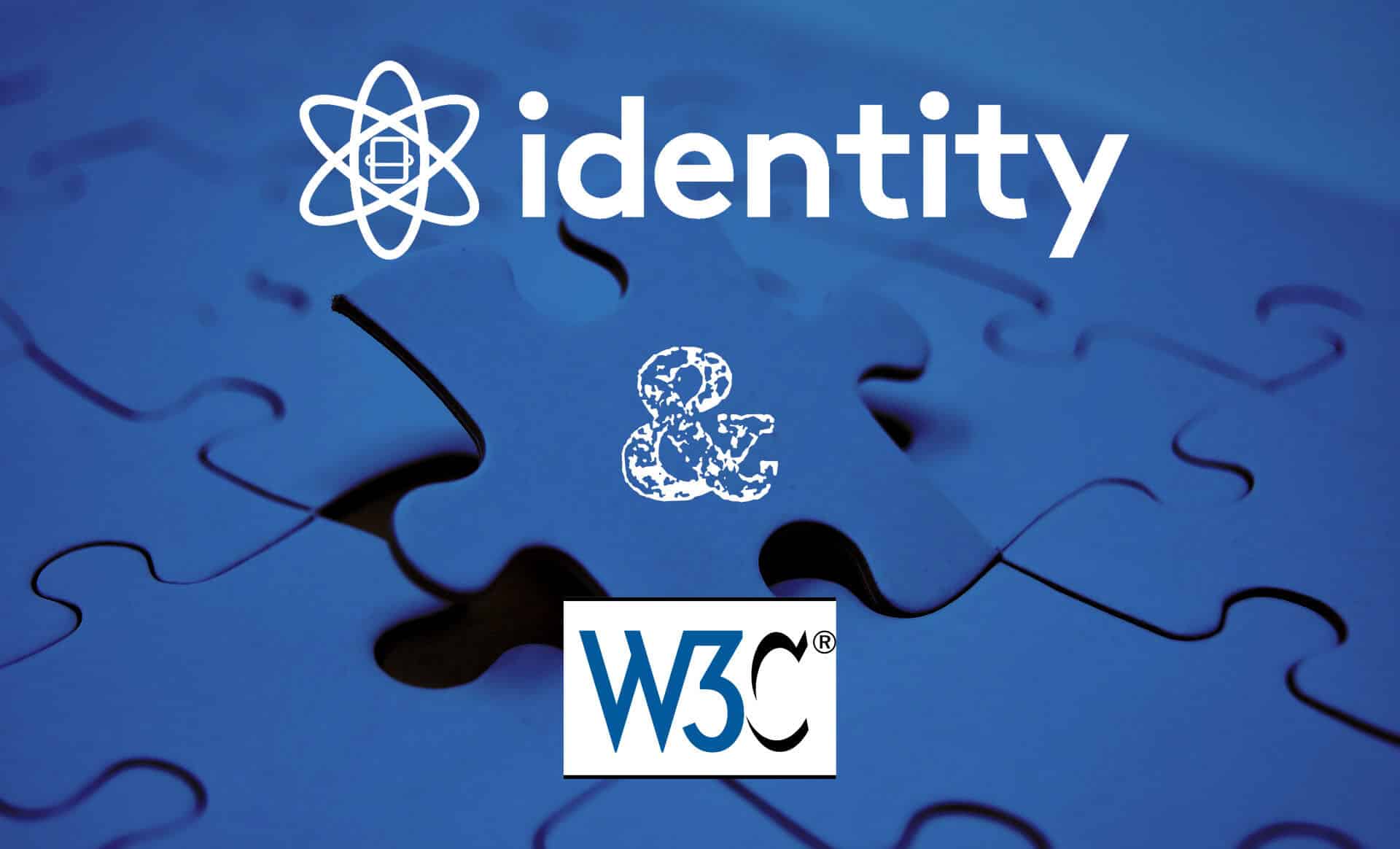Table of Contents
In a significant move, Identity.com, a proud member of the Decentralized Identity Foundation, has joined the World Wide Web Consortium (W3C). This collaboration marks a pivotal step in the ongoing evolution of decentralized identity and furthers Identity.com’s commitment to shaping the future of the web.
What Is The World Wide Web Consortium (W3C)?
The World Wide Web Consortium (W3C) is an international community founded in 1994 by Tim Berners-Lee, the inventor of the World Wide Web. Its mission is to develop open standards that ensure the web’s long-term growth and evolution. These standards allow developers to build interoperable web applications that function seamlessly across browsers and devices.
W3C’s dedication to open standards aligns with the principle of decentralization, fostering a more inclusive and collaborative web ecosystem. This vision, championed by Berners-Lee, emphasizes simplicity, modularity, and user empowerment.
Centralized vs. Decentralized Identity
Traditional identity systems, such as passports and social media profiles, rely on centralized databases. These systems are vulnerable to cyberattacks and data breaches due to their single point of failure. Additionally, managing multiple accounts with weak passwords compromises security, while reliance on centralized identity providers raises privacy concerns.
Decentralized identity offers a secure alternative by utilizing decentralized identifiers (DIDs) on distributed ledgers. These systems eliminate single points of failure, enhance privacy, and empower individuals to control their digital identities. Unlike centralized systems, DIDs are unique, user-controlled identifiers verified through public key cryptography.
Exploring Decentralized Identifiers (DIDs)
Decentralized Identifiers (DIDs) are a groundbreaking technology transforming the way individuals manage their digital identities. Unlike traditional identifiers tied to centralized systems, DIDs offer a secure, user-centric approach. They act as unique identifiers that enable verifiable and self-sovereign identities, allowing users to control access to their personal information.
Secured through public key cryptography, DIDs empower users to selectively share information, ensuring privacy and precision in digital interactions. This approach eliminates the need for intermediaries, reducing risks associated with centralized data storage.
The foundational standards for DIDs are being developed collaboratively by organizations such as the Decentralized Identity Foundation and the W3C DID Working Group. These efforts aim to establish a robust framework that supports widespread adoption of decentralized identity solutions.
Self Sovereign Identity (SSI)
Self-Sovereign Identity (SSI) takes the principles of decentralized identity a step further, empowering individuals with full control over their personal data. Unlike traditional systems where data is stored and controlled by third parties, SSI ensures that individuals decide what information to share and with whom.
Christopher Allen, a pioneer in this field, outlined ten core principles of SSI in The Path to Self-Sovereign Identity. These principles emphasize user autonomy, security, and privacy. SSI relies on technologies like DIDs and Verifiable Credentials (VCs) to create a decentralized identity ecosystem, enabling secure and seamless digital interactions.
The Decentralized Web: Web3
Web3 represents a paradigm shift in internet architecture, moving away from centralized platforms to a decentralized, blockchain-powered web. Its core values include user ownership, data privacy, open collaboration, and permissionless innovation. Unlike Web2, where large corporations control user data, Web3 gives individuals full control over their digital assets and interactions.
Web3 applications prioritize interoperability, allowing seamless integration between different platforms and services. This decentralized framework is essential for building a more equitable and user-driven internet.
The Critical Identity Layer
Web2’s centralized identity systems raise significant concerns about user privacy and control. The early internet lacked a native identity layer; initial use cases did not require robust identity verification, and individual websites managed their own identity processes. This led to the rise of centralized identity providers, which not only store user data but often exploit it for their own business purposes. The absence of user ownership over online identities exposes individuals to risks such as data breaches, manipulation, censorship, and even permanent loss of access.
To realize the vision of a decentralized web, Web3 must incorporate a native identity layer. This layer enables users to utilize Decentralized Identifiers (DIDs) for accessing services, conducting seamless transactions, and transferring ownership of digital or physical assets across platforms. By implementing a secure and user-centric identity framework, Web3 can address the shortcomings of the current internet. This commitment to a decentralized identity ecosystem drove Identity.com to collaborate with the W3C, ensuring the development of a robust and inclusive identity layer for the web’s future.
Why did Identity.com join the W3C?
Identity.com’s journey with the W3C began in response to significant challenges in advancing decentralized identity standards. On September 1, 2021, the Mozilla Foundation formally objected to the approval of the Decentralized Identifiers (DIDs) v1.0 specification. This objection, echoed by Google and Apple, stemmed from concerns outlined in Mozilla’s Internet Health Report, which highlighted the growing dominance of a few major technology companies and their centralized control over user data.
These objections reveal the disruptive potential of Web3. By challenging centralized systems, Web3 undermines the control these entities have over data and dismantles longstanding practices of data surveillance and monetization.
Recognizing the need for change, Identity.com joined the W3C to actively participate in shaping the future of decentralized identity. The W3C serves as a critical platform where industry leaders, experts, and stakeholders collaborate to establish open standards. Through this partnership, Identity.com contributes to the development of foundational technologies like DIDs and Verifiable Credentials, advancing the adoption of decentralized identity solutions.
Together with members of the Decentralized Identity Foundation and the W3C DID Working Group, Identity.com is working toward a future where individuals have full control over their digital identities. This effort aims to eliminate the vulnerabilities of centralized systems and empower users with privacy, security, and ownership of their personal data.





